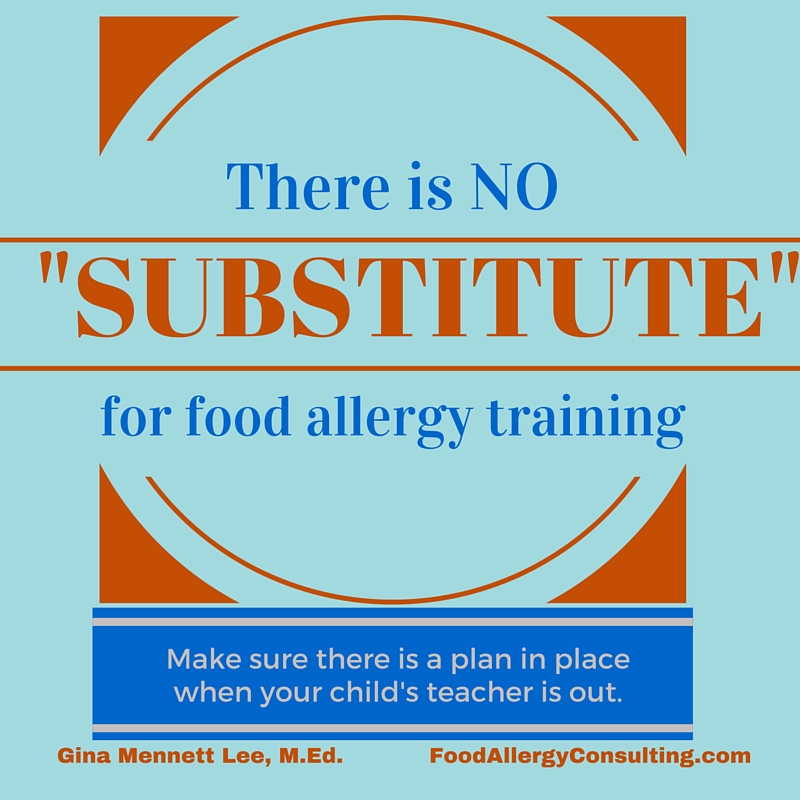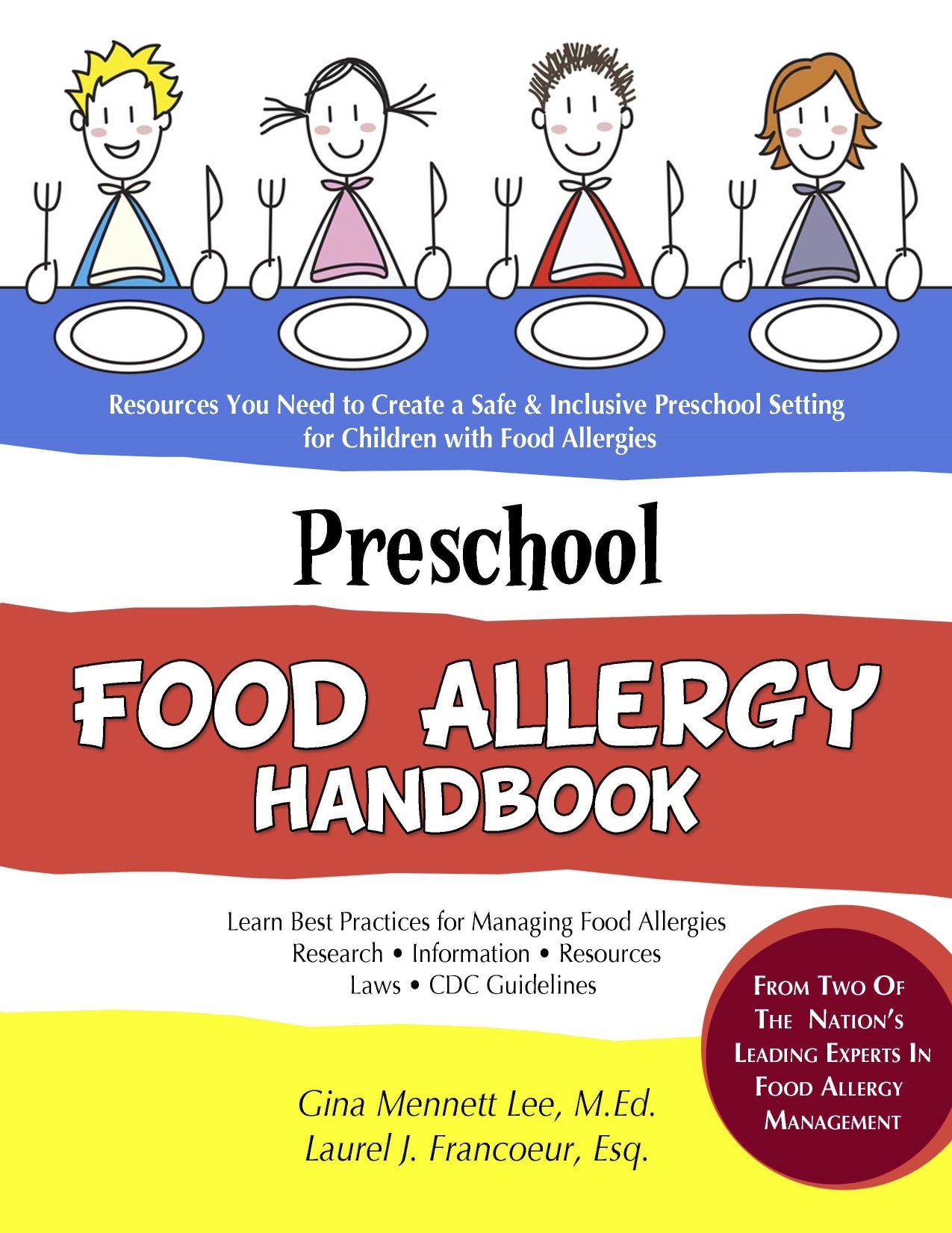It’s 6:00 am. I should be hopping in the shower before work but my head is throbbing and I feel awful. I check my temperature and sure enough, I have fever. This means I’m going to have to call in sick. Ugh!
Teachers hate to call in sick. It usually means lessons need to be retaught and lots of work upon return. But inevitably it happens.
So, what happens when a teacher calls in sick?
Well that depends on the school. Years ago, there was a sub list and the secretary would call local moms and retired teachers from the list into the class. Often, teachers would request certain subs. Some schools still operate like this. However, many have opted to have an external service take care of this task. This means that subs can be people that are familiar to the school or complete strangers.
This is a major (and potentially dangerous) gap in providing accommodations to those students with food allergies. All teachers should have a sub folder with details about students that may need extra attention. But does that mean this information is read and understood? Absolutely not. Even if the sub is able to review the information, reading a one or two-page document minutes before students enter the classroom cannot and does not replace necessary training.
Substitute teachers have a lot of responsibility. They are coming into a classroom that is not theirs with students they do not know and are asked to teach subjects they may or may not have experience teaching. This is a daunting task. They may not know what accommodations are in place for specific students. They certainly won’t know how to implement accommodations or what to do on an emergency unless they are trained.
To further illustrate my point, below are actual scenarios that took place in my classroom. At the time, none of my students had allergies. However, think of these scenarios in the context of a child with a food allergy and a substitute teacher with no training.
Scenario One:
A child comes to you with a stomach ache. Lunch is in 20 minutes. You tell the child, “You may just be hungry. Go to lunch and if you still feel sick after, I’ll let you go to the nurse then.”
Scenario Two:
A child begins to vomit in class. You bring the trash can to the child and rub his back while he continues to vomit. When the child’s vomiting subsides, you have another student escort him to the nurse’s office with a bucket (just in case).
Additional scenario:
There is a substitute physical education teacher. The children go out to the fields after lunch to play soccer. A child comes to the teacher complaining that their throat hurts and they have a stomach ache. The teacher tells the child he can sit out of the soccer game for a while and lets him sit on the bench while he continues the class.
I could go on and on. These are scenarios that occur each and every day at schools all across the country. The way they are handled is appropriate for a child without a food allergy. But for a child with a food allergy, all of these could lead to a delay, or no administration, of life-saving epinephrine.
It is imperative that all staff supervising children with food allergies be trained to identify the symptoms of an allergic reaction and that they know how to respond.
One of the three non-negotiables I recommend is supervision by a trained staff member at all times and this includes times when there is a substitute teacher.
What needs to be done:
There should be a plan in place for every child with a food allergy. In my opinion, all people that plan to sub should be trained in basic food allergy management and what to do in an emergency. Then, when the sub is assigned a classroom, he or she should be apprised of any child with a medical condition, what accommodations need to be implemented, and what should be done in an emergency. (This should not just be left in a substitute folder that may or may not be read and understood.) This should take place in a meeting with a qualified staff person that can assess understanding and answer questions (i.e. school nurse, 504 coordinator).
I have worked with, and for, many schools. I’ve only had experience with one school that provided food allergy training for substitutes. Therefore, until training becomes a prerequisite, other solutions may be necessary.
Below are some alternatives. Some may not ideal but there must be a plan in place prior to the school year (via a 504 or health care plan).
1. Use an intern as the sub for classrooms with high risk students. Every year, our school has an intern or two. These staff members can be trained and used as subs in certain classrooms.
2. Place high risk students in classrooms with more than one adult. Many classrooms now have multiple adults working in them. When considering class placement, choose a classroom with more than one adult for those high-risk students. Make sure to train support staff so if the teacher is out, that staff member can step in.
3. Trained all or select support staff members in the school. Use those staff members as the substitute in classrooms with identified at-risk students. Place the sub in classrooms where there are no students at risk for anaphylaxis or other high risk medical conditions.
This is not something that should be left to chance. What is the plan for your child?


